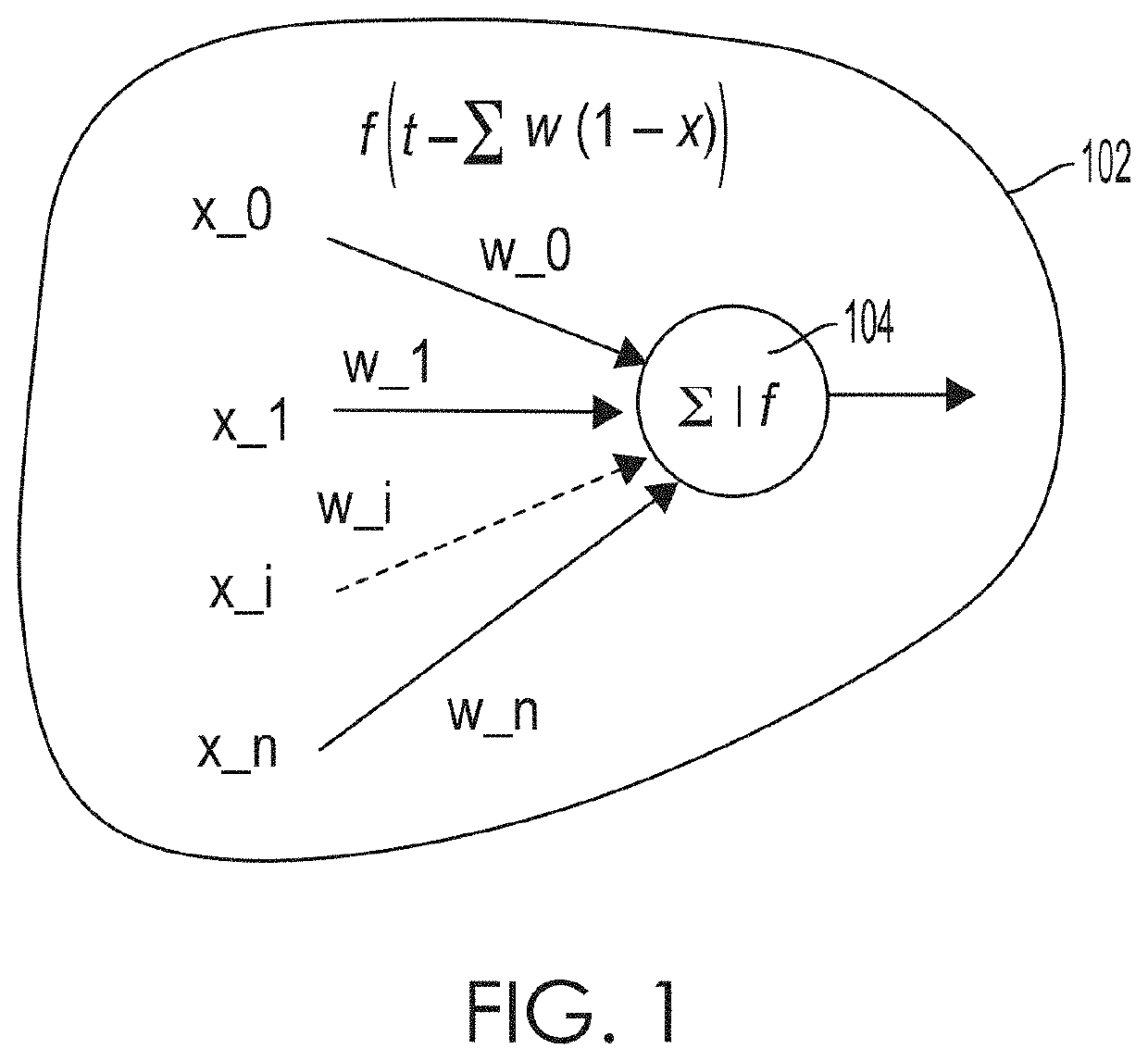Optimizing capacity and learning of weighted real-valued logic
a real-value logic and capacity optimization technology, applied in the field of computer applications, can solve problems such as computational intensive, large domain expert input, and training data sets
- Summary
- Abstract
- Description
- Claims
- Application Information
AI Technical Summary
Benefits of technology
Problems solved by technology
Method used
Image
Examples
Embodiment Construction
[0017]Systems, methods and techniques are presented, which can determine various parameters for optimizing machine learning models, e.g., neural networks. A method, for example, may determine the threshold-of-truth (alpha), activation function and logical constraints (e.g., convex optimization linear program) of weighted real-valued logic operators such as logical neurons (e.g., weighted offset Łukasiewicz real-valued strong conjunction and / or disjunction operators) to optimize the functional gradients of the activation function for a given maximum expressivity (e.g., defined by the ratio between the maximum and minimum input weights) and operator size or arity (number of operands). In an aspect, various parameters for machine learning determined according to embodiments of the systems, methods and techniques can address a vanishing gradient problem in machine learning, for example, having too small of gradients which renders machine training difficult.
[0018]An artificial neural net...
PUM
 Login to View More
Login to View More Abstract
Description
Claims
Application Information
 Login to View More
Login to View More - R&D
- Intellectual Property
- Life Sciences
- Materials
- Tech Scout
- Unparalleled Data Quality
- Higher Quality Content
- 60% Fewer Hallucinations
Browse by: Latest US Patents, China's latest patents, Technical Efficacy Thesaurus, Application Domain, Technology Topic, Popular Technical Reports.
© 2025 PatSnap. All rights reserved.Legal|Privacy policy|Modern Slavery Act Transparency Statement|Sitemap|About US| Contact US: help@patsnap.com



